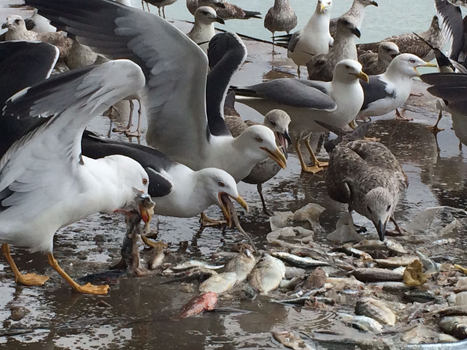Population expansions of successful species have gained importance as a major conservation and management concern. The success of these ‘winners' is widely attributed to their high adaptability and behavioural plasticity, which allow them to efficiently use opportunities provided by human-modified habitats. However, most of these studies consider conspecifics as ecological equivalents, without considering the individual components within populations. This is critical for a better understanding of the main ecological mechanisms related to the success of winning species. Here, the spatial ecology of the opportunistic yellow-legged gull Larus michahellis, a clear example of a winning species in southern Europe, is investigated to examine its degree of individual specialization in habitat use. To test for such individual strategies, specialization metrics is applied to spatial data obtained from 18 yellow-legged gulls that were GPS-tracked simultaneously during the breeding season. The results revealed that population-level generalism in habitat use in the yellow-legged gull arises through varying levels of individual specialization, and individual spatial segregation within each habitat. Importantly, the combination of individual specialization and individual spatial segregation may reduce intra-specific competition, with these 2 important mechanisms driving the success of this winning species. informacion[at]ebd.csic.es: Navarro et al (2017) Shifting individual habitat specialization of a successful predator living in anthropogenic landscapes. Mar Ecol Prog Ser https://doi.org/10.3354/meps12124
http://www.int-res.com/abstracts/meps/Individual variability in seabird foraging and migration/av5

 Las altas temperaturas están provocando que las lagunas y las marismas de Doñana pierdan agua rápidamente
Las altas temperaturas están provocando que las lagunas y las marismas de Doñana pierdan agua rápidamente




